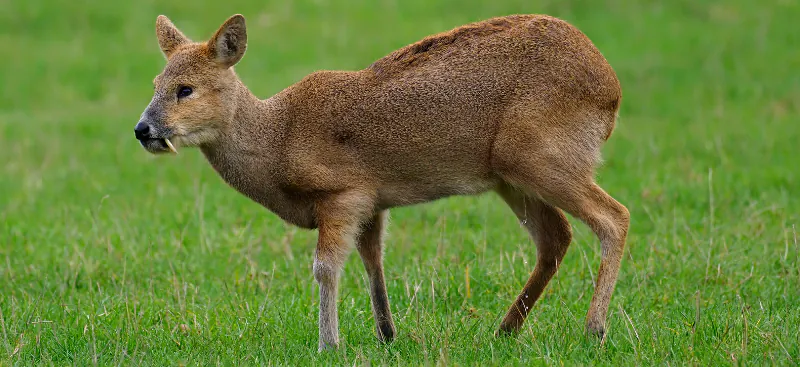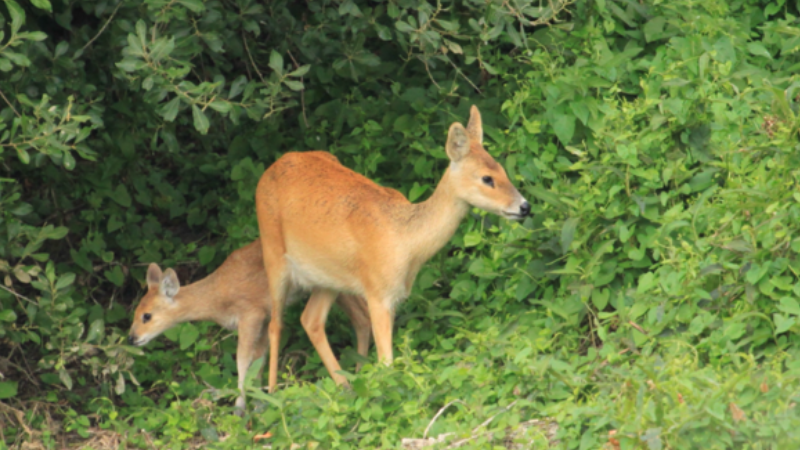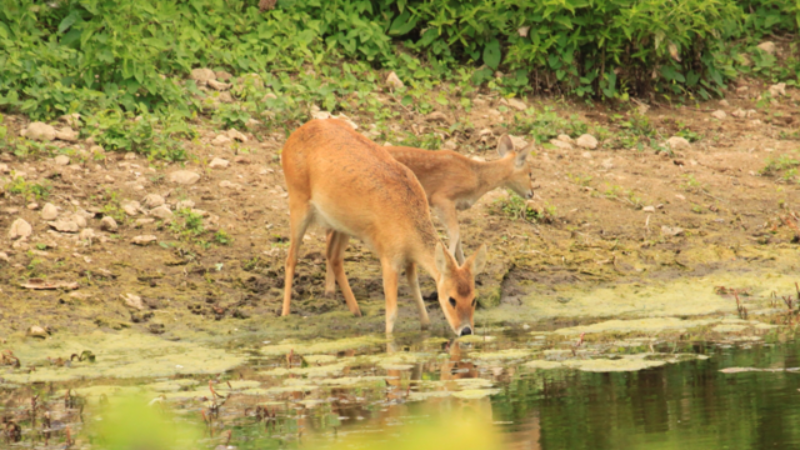Meet Our Chinese Water Deer
Yes, they have fangs! The Chinese water deer certainly bring the wow factor to the farm as they look like something from prehistoric times or a fairy-tale story. But no, they are pretty real, and we can even see them from our doorstep!
You may think approaching one will be a fight or flight situation, but rest assured that even with those fangs, the water deer are harmless if you don't give them a reason to defend themselves. They are also (thankfully) herbivores, and their diet consists of plants.
Why do Chinese water deer have fangs?
It's no surprise they've been given the nickname vampire deer. Instead of growing antlers like other UK deer species, water deer grow prominent tusks. These come in handy when defending territory during rutting season or their young. Both buck (male deer) and doe (female deer) can grow tusks, but bucks tend to have larger ones.
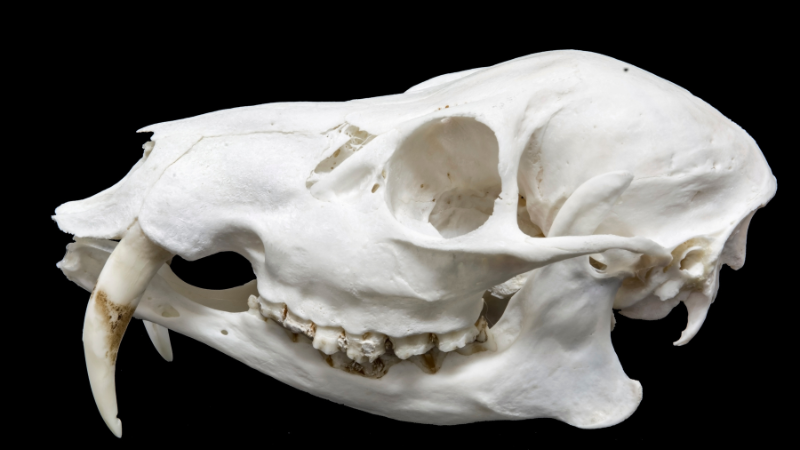
Chinese Water Deer Skull
Are Chinese water deer native to UK?
Chinese water deers were first brought over to the UK from China in 1873. They were originally kept in zoos, but over the years, some escaped, and others were introduced into deer parks.
Where are Chinese water deer in the UK?
Since escaping from Whipsnade Zoo in 1929, the water deer found home in the countryside of Bedfordshire and have since stretched their habitats to Cambridgeshire and Norfolk, where they can still be sighted. Their habitat preferences consist of swampy regions and open grasslands.
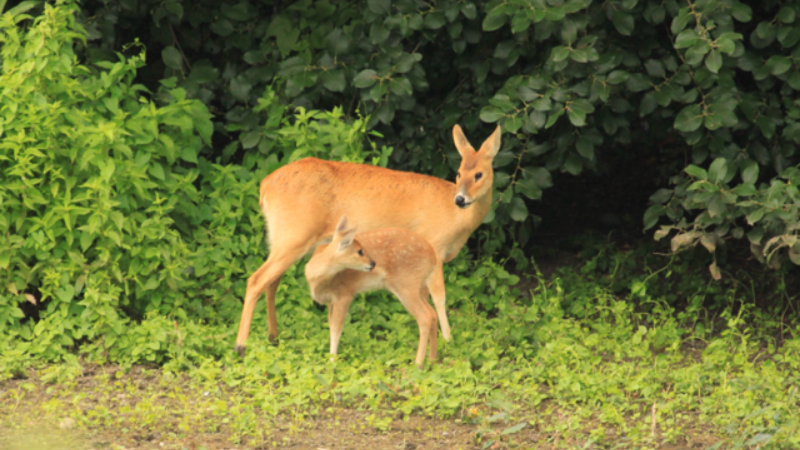
Chinese Water Deer doe and fawn spotted on Ivel Valley Farm
Are Chinese water deer endangered?
Even though their population is sadly declining in East Asia, it is thankfully growing here in England. It is now believed we account for 10% of their population worldwide.
Chinese water deer mating behaviour
Water deer are mainly solitary animals and will only come together during the breeding season to become a mating pair. Partnerships are usually formed in November and will last until April, just before the doe gives birth. In May-June, fawns will begin to come into the world and will stay with their mum until they can fend for themselves. Water deer usually produce 1-3 fawns, but there have been cases where they birth up to 6 fawns.
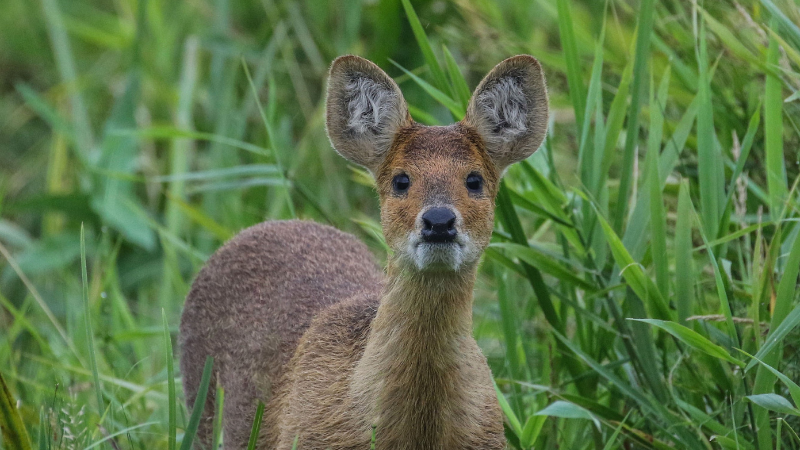
Here at Ivel Valley Farm, we continuously look for new ways to support our wildlife and help boost the population of endangered species. Click here to learn how we are helping other species and the ecosystem. We are delighted that the Chinese water deer have found a home here, as recent sightings have shown that our land provides everything they need to thrive. Here are some images of a doe and her young drinking from one of our ponds!

